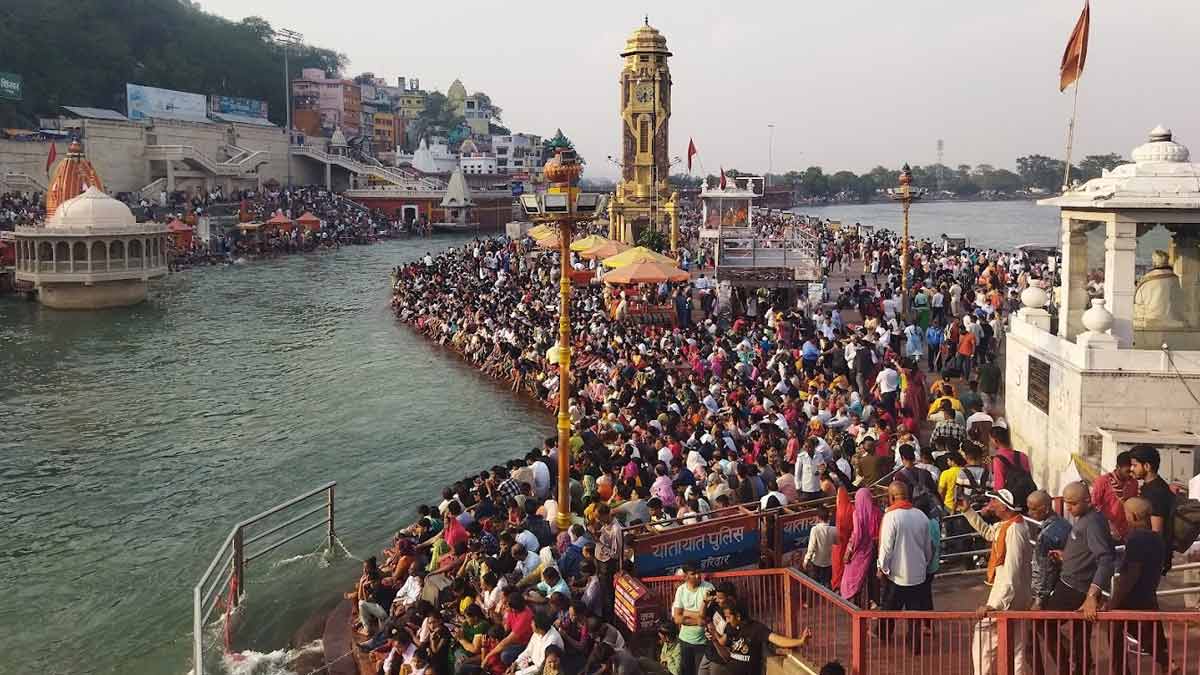The Ganga Dussehra festival, marking the descent of the sacred Ganga river from heaven to earth, is being celebrated today with special rituals of bathing, worship, and devotion. This auspicious festival observed on the tenth day of the bright half of the month of Jestha, draws thousands of pilgrims to holy sites across Nepal.
In Sundarijal, part of Gokarneshwar Municipality-1, a significant number of devotees gathered early in the morning at the Siddhagaya pilgrimage site. This site, where the Bagmati and Shailmati rivers meet, is known for its natural beauty enhanced by two nearby waterfalls. For years, the area has been organized to accommodate ritual baths, believed to cleanse sins and grant liberation when combined with the worship of Lord Shailmateshwar.
The ten-day festival of Ganga Dussehra commemorates Bhagirathi’s efforts to bring the Ganga river from heaven to earth. Ritual bathing in rivers during these days is thought to purify devotees of ten types of sins, including theft, violence, adultery, harsh speech, lying, defamation, gossip, covetousness, malice, and stubbornness.
Significant bathing fairs are held at major sites such as Siddhagaya, Hatyamochan Ghat in Kathmandu, Gosainkunda in Rasuwa, Banganga in Kapilvastu, and Triveni Sangam in Nawalparasi. According to religious scriptures, bathing during Ganga Dussehra purifies the body, mind, and speech from these sins.
Rohit Limbu, chairman of the Ganga Dussehra Bathing and Worship Committee, reported a large gathering at Hatyamochan Ghat, located at the confluence of Kageshwari Manohara and Gokarneshwar Municipalities. Legend holds that Parashurama cleansed the sin of matricide at this site after killing his mother, Renuka, on his father, sage Jamadagni’s orders. Despite bathing at thousands of pilgrimage sites across India, Parashurama found absolution only at Hatyamochan Ghat, where his mother was also revived.
Professor Dr. Devmani Bhattarai of the Nepal Panchang Decision Development Committee highlighted the spiritual significance of the festival. The combination of the month of Jestha, the bright half, the tenth day, Wednesday, and Hasta Nakshatra is considered a powerful time for fulfilling desires through ritual bathing.
The festival’s historical roots trace back to the descent of the Ganga to earth, believed to have taken place over these ten days. Similar significant bathing festivals occur at Dashashwamedh Ghat in Kashi, India, and Rameshwaram in Setubandh, established by Lord Rama during the Treta Yuga. Bathing and worshipping at these sacred sites during Ganga Dussehra is believed to eradicate ten types of sins, attracting pilgrims to holy sites in both Nepal and India.






